Watchmaking: A Machinist’s View
Old-world craftsmanship combines with precision machining on a vertical machining center and Swiss-type lathe to produce some of the only U.S.-made mechanical wristwatch movements.
Article From: 11/1/2017 Modern Machine Shop, Matt Danford, Senior Editor

Hunched over his desk and peering through an eyepiece, Cameron Weiss pays little attention to the machine tools in the next room. The Swiss-trained master watchmaker is usually far too busy polishing, burnishing, fit-checking and assembling the hundreds of pins, gears, springs and levers that go into the mechanical “movements” powering each luxury timepiece.
That’s not to suggest Mr. Weiss doesn’t appreciate the critical role these machine tools play in realizing his dream: to build his own brand of wristwatches, one based unapologetically on his own artistic ideals. Just as emblazoning his family name across the face implies a certain aesthetic, the label “Los Angeles, California” implies a deep-seated desire to restore prestige to a domestic industry that largely collapsed with the advent of cheaper, more accurate quartz movements in the 1960s. For Mr. Weiss, restoring that prestige means not just assembling the parts here, but making them here, too.

Brass bridge workpieces have just undergone first-side profile machining on a 16-station custom fixture employing Mitee-Bite Uniforce double-sided clamps. These low-profile devices enable mounting brass workpieces directly adjacent to one another and provide full access to the top faces.
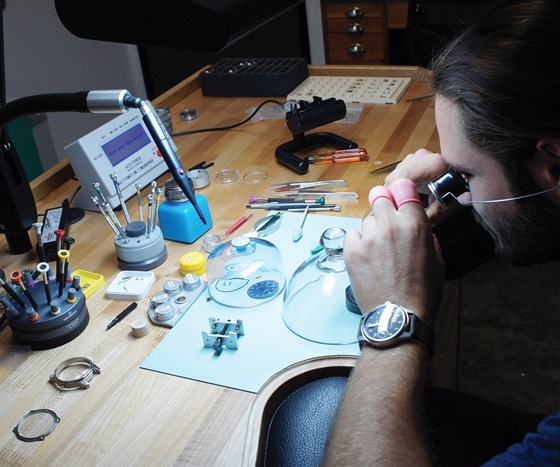
Many of the hand tools Cameron Weiss employs to finish and assemble watches are machined in house by Grant Hughson, his machinist partner.
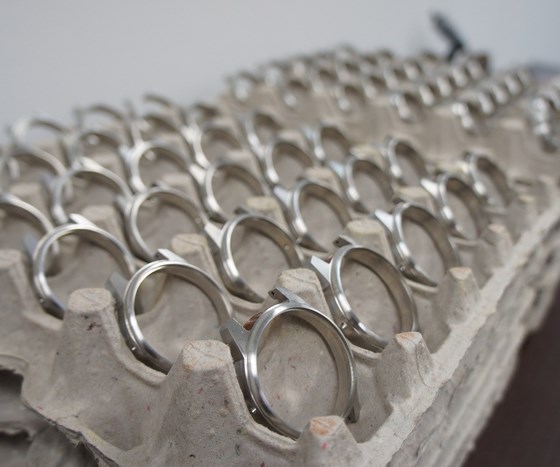
Not all production is in house. Steel watch casings require too much capacity, so they’re cut on an L.A.-area shop’s turn-mill to a specific finish for handwork.
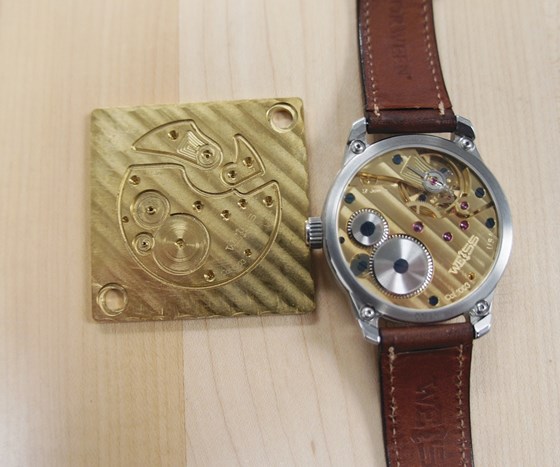
Bridge components must be cut from particular portions of the square brass workpieces depending on the particulars of the movement design and the width and spacing of Geneva stripes like the ones visible here.
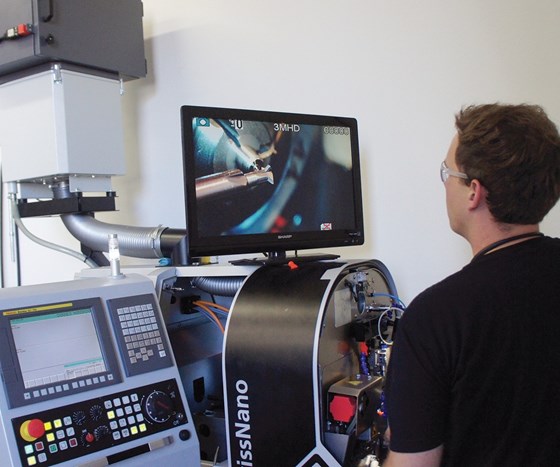
Grant Hughson, machinist, developed a microscope camera system to easily see everything going on inside the tight workzone of the shop’s Tornos Swiss Nano Swiss-type lathe.
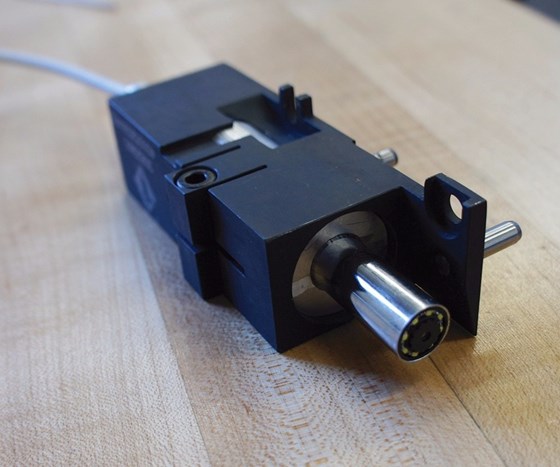
The microscope camera fits in a sleeve that’s installed in one of the gang-slide toolholders.
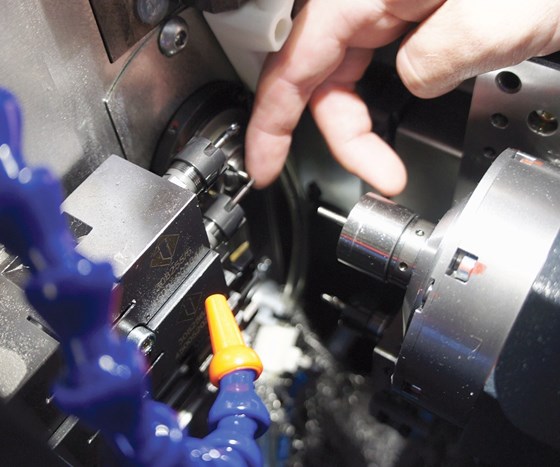
The Swiss-type workzone is tight, but it provides the flexibility and the capability—particularly in the form of two high-speed milling spindles—to turn around tiny, delicate parts quickly.
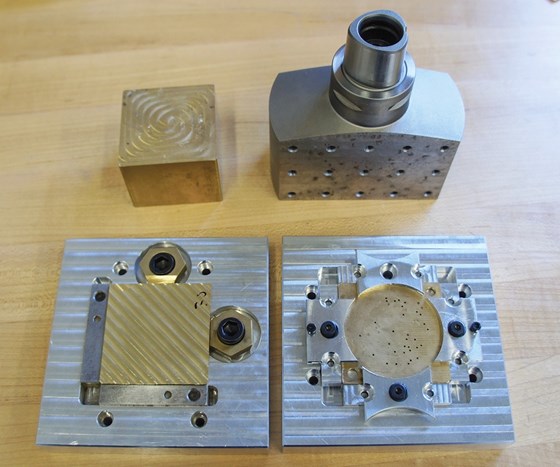
These first- and second-operation prototype fixtures for bridges and main plates mount to modified Capto quick-change tooling blocks (top right) to ensure precisely repeatable mounting. Holes machined into two opposing corners during the first operation are left accessible for second-operation probing routines, which use the hole locations and the angle of a diagonal formed between them to calculate offsets.
——————————————————————————————————–
Article From: 11/1/2017 Modern Machine Shop, Matt Danford, Senior Editor
Click Here for a free subscription to Modern Machine Shop magazine.
Click Here to subscribe to the MMS Extra monthly e-newsletter.
This article is reprinted with permission from Modern Machine Shop Magazine, and is protected under U.S. and international copyright laws. Modern Machine Shop Magazine is protected under U.S. and international copyright laws. Before reproducing anything from this Web site, call Gardner Business Media, Inc. (513) 527-8800.



1 Comment
Great article. Another manufacture, Shinola, is doing similar work on machining centers in Detroit. I think they import their movements, but case, cover and works are assembled in Detroit.